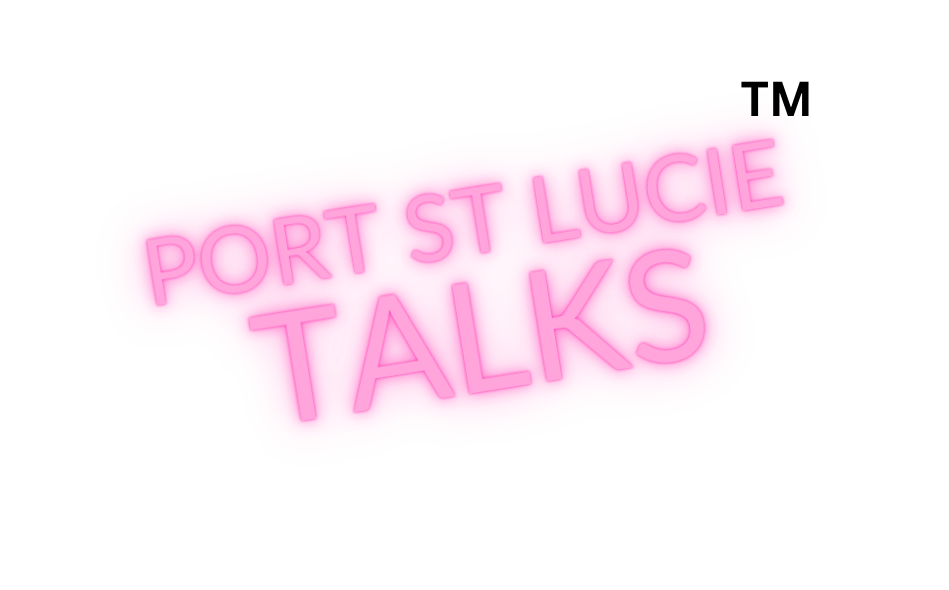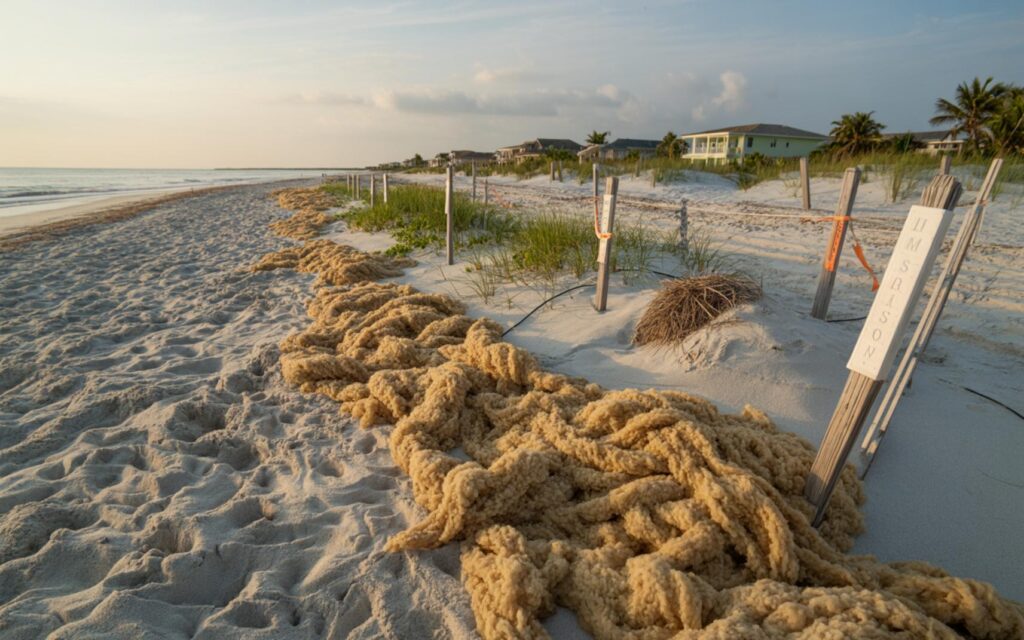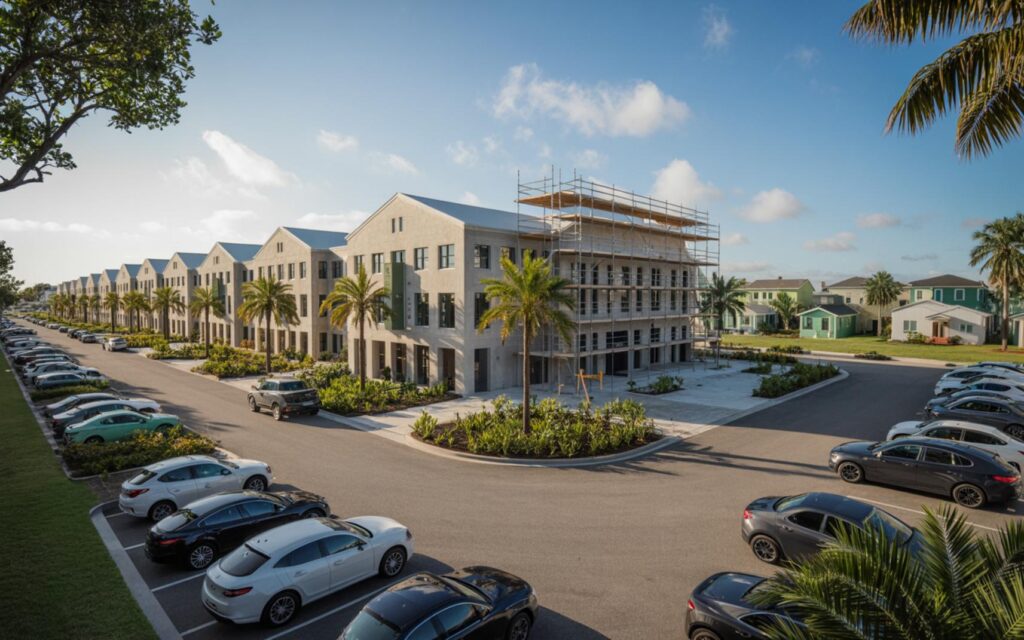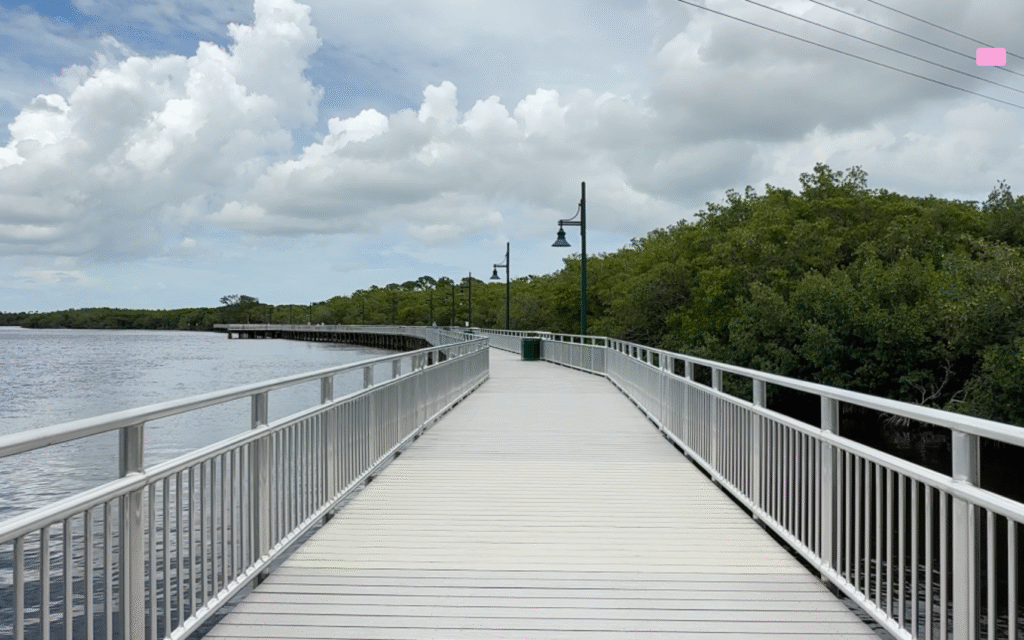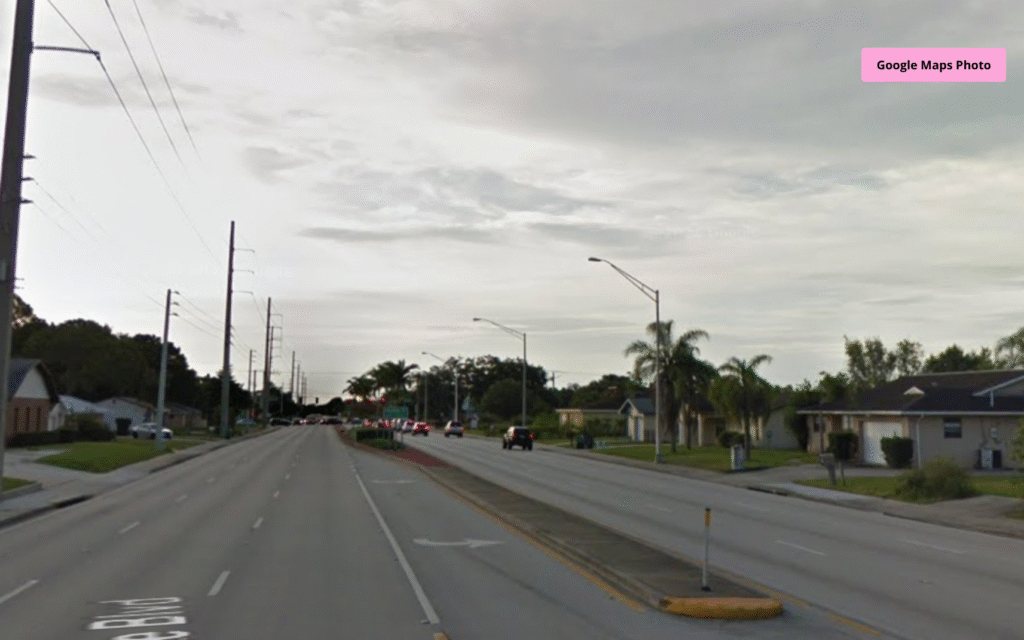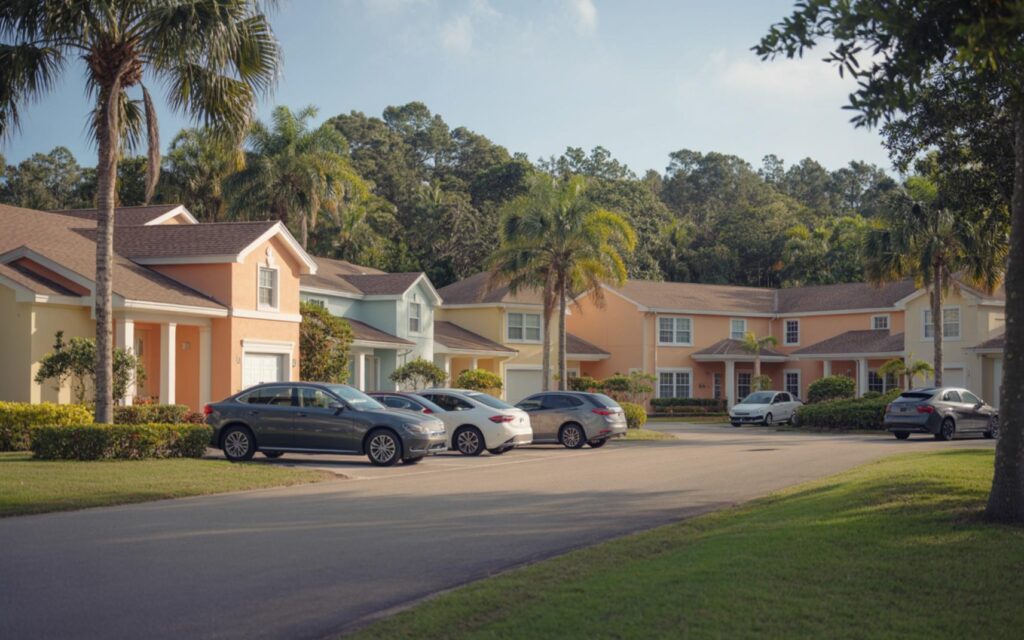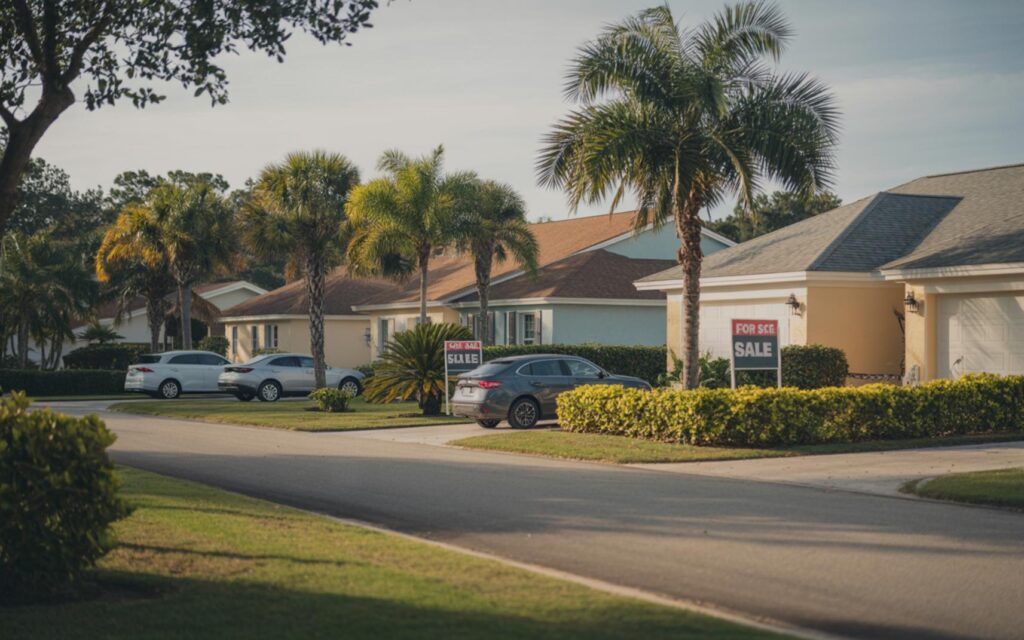Record amounts of sargassum seaweed are washing ashore on Florida beaches, creating new obstacles for sea turtle hatchlings during their critical journey from nest to ocean. The impact of sargassum seaweed on sea turtle hatchlings is drawing concern from conservationists and scientists as beach landings intensify in 2025.
Sargassum Seaweed on Florida Beaches: Growing Challenge for Hatchlings
Sargassum seaweed, a yellow-brown, free-floating algae, is forming large mats on the ocean surface before accumulating in thick piles along the Florida coastline. According to recent studies, these piles can exceed a meter in height and stretch for hundreds of meters, significantly altering the natural beach environment.
While sargassum provides shelter and food for marine life in the ocean, its excessive presence on land creates physical barriers for sea turtle hatchlings. These barriers slow their crawl to the ocean, increasing the risk of mortality.
Impact of Sargassum Seaweed on Sea Turtle Hatchlings
Research focused on the effects of sargassum seaweed on sea turtle hatchlings reveals significant delays in their movement. Even low piles, measuring 7 to 9 centimeters, can slow hatchlings. In deeper piles, loggerhead hatchlings were slowed by up to 175% compared to clear sand, according to recent scientific findings.
Hatchlings often flip onto their backs while trying to cross sargassum, sometimes more than 20 times in a single attempt. These delays expose them to predators, dehydration, and overheating, compounding the dangers they already face on Florida beaches.
Risks to Survival Rates
Only about 1 in 1,000 sea turtle hatchlings typically survive to adulthood. The presence of sargassum seaweed increases this risk by prolonging their time on the beach and making them more vulnerable to threats. Conservationists warn that the combination of natural hazards and sargassum barriers could further reduce survival rates.
Physical and Environmental Hazards
Sea turtle hatchlings already encounter obstacles such as artificial lighting, beach debris, and natural predators. The addition of thick sargassum mats presents a new challenge, making their journey even more dangerous. Prolonged exposure on the beach due to these barriers can lead to higher mortality from environmental stress and predation.
Causes of Increased Sargassum Blooms in Florida
According to environmental agencies, the rapid growth of sargassum seaweed is linked to climate change and increased nutrient pollution. Warmer ocean temperatures and nutrient runoff from human activities have contributed to more frequent and larger sargassum blooms.
These factors result in greater volumes of sargassum reaching Florida beaches, where it accumulates and creates hazards for wildlife, including sea turtle hatchlings.
Conservation Efforts and Beach Management Strategies
In response to the growing impact of sargassum seaweed on sea turtle hatchlings, beach management practices are being evaluated across Florida. Agencies are considering more responsive interventions to remove excessive sargassum from nesting beaches during hatchling season.
Conservation groups and local authorities are working to balance the ecological benefits of sargassum in the ocean with the need to protect hatchlings on land. Integrated management strategies are being discussed to address both the environmental and wildlife impacts of sargassum blooms.
Ongoing Research and Recommendations
Recent studies highlight the urgent need for targeted beach cleaning during peak nesting and hatching periods. Experts recommend adaptive management that considers both the timing and scale of sargassum removal to minimize harm to hatchlings and preserve the broader coastal ecosystem.
Officials note that details may be updated as further research and monitoring continue throughout the 2025 nesting season.
Broader Environmental Context
The issue of sargassum seaweed on Florida beaches is part of wider environmental changes affecting coastal ecosystems. Rising sea temperatures, nutrient runoff, and changing weather patterns are contributing to sargassum blooms and impacting marine wildlife.
According to official sources, addressing these challenges requires coordinated efforts among environmental agencies, researchers, and local communities. Effective management of sargassum seaweed is essential for the long-term survival of sea turtle populations and the health of Florida’s coastal habitats.
- Sargassum seaweed forms large mats in the ocean, providing habitat for marine life.
- On land, excessive sargassum creates barriers for sea turtle hatchlings.
- Climate change and pollution are driving larger, more frequent sargassum blooms.
- Conservation strategies focus on balancing ecological benefits and hatchling protection.
Frequently Asked Questions About Sargassum Seaweed and Sea Turtle Hatchlings
What is sargassum seaweed and why does it wash ashore in Florida?
Sargassum seaweed is a yellow-brown, free-floating algae that forms large mats in the ocean. It washes ashore in Florida due to ocean currents, wind patterns, and increased growth linked to warmer water and nutrient runoff.
How does sargassum seaweed affect sea turtle hatchlings?
Sargassum seaweed creates physical barriers on beaches, making it harder for hatchlings to reach the ocean. This increases their risk of dehydration, predation, and overheating.
Are there efforts to remove sargassum from Florida beaches to help hatchlings?
Beach management agencies and conservation groups are evaluating strategies to remove excessive sargassum during nesting and hatching seasons. These efforts aim to protect hatchlings while preserving the benefits of sargassum for marine life.
Can sargassum seaweed be beneficial for sea turtles?
In the ocean, sargassum provides shelter and food for juvenile sea turtles and other species. On land, however, too much sargassum can harm hatchlings by blocking their path to the sea.
Where are the most affected beaches for sea turtle hatchlings in Florida?
Many beaches along the Florida coastline experience sargassum landings, especially during peak bloom periods. The most affected areas often change each year based on ocean currents and weather patterns.
